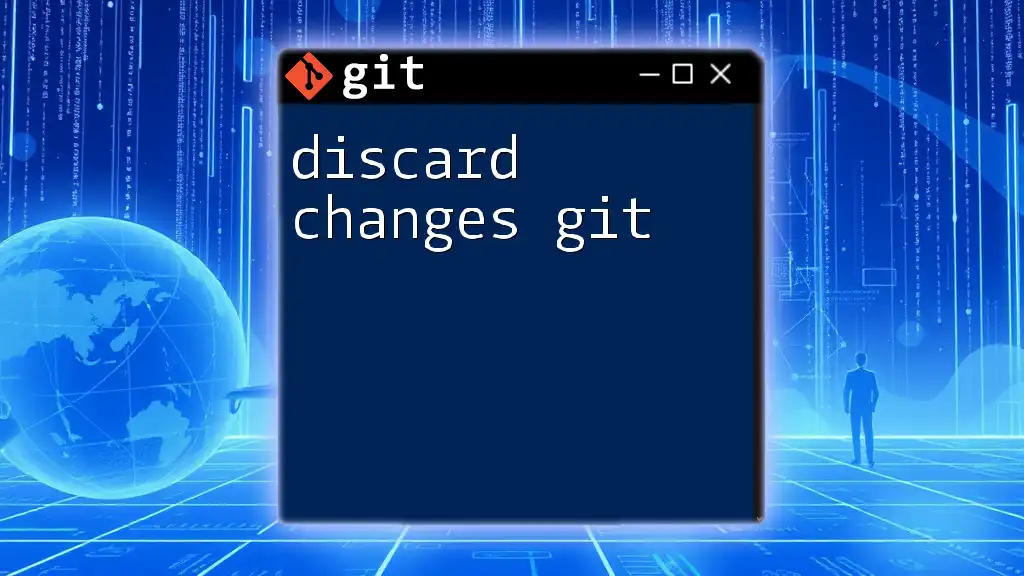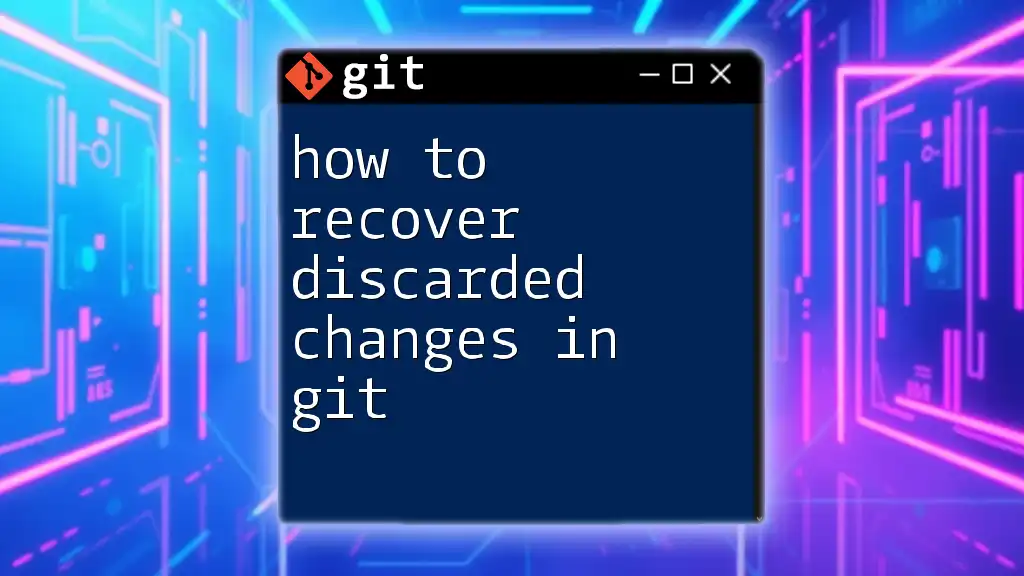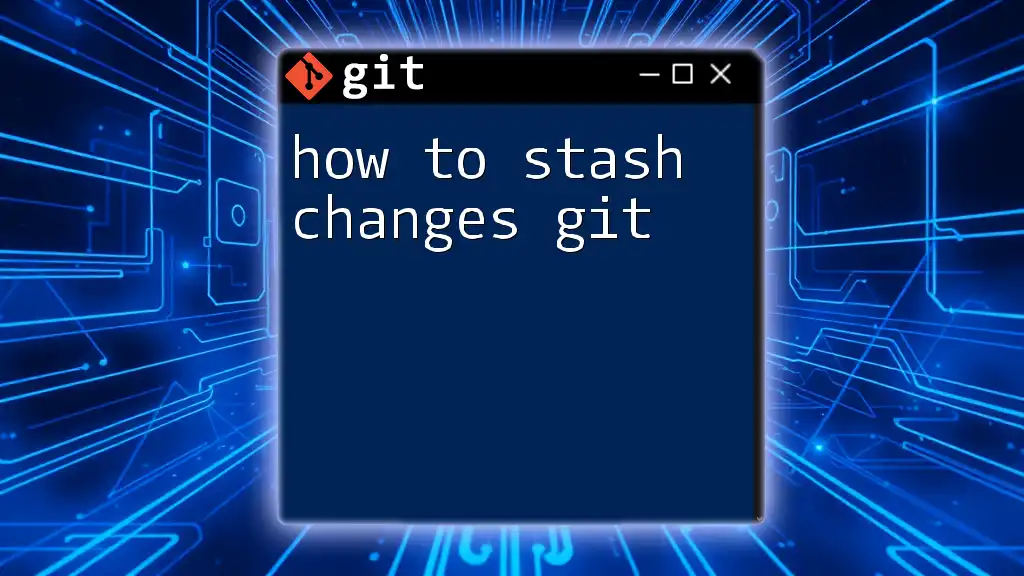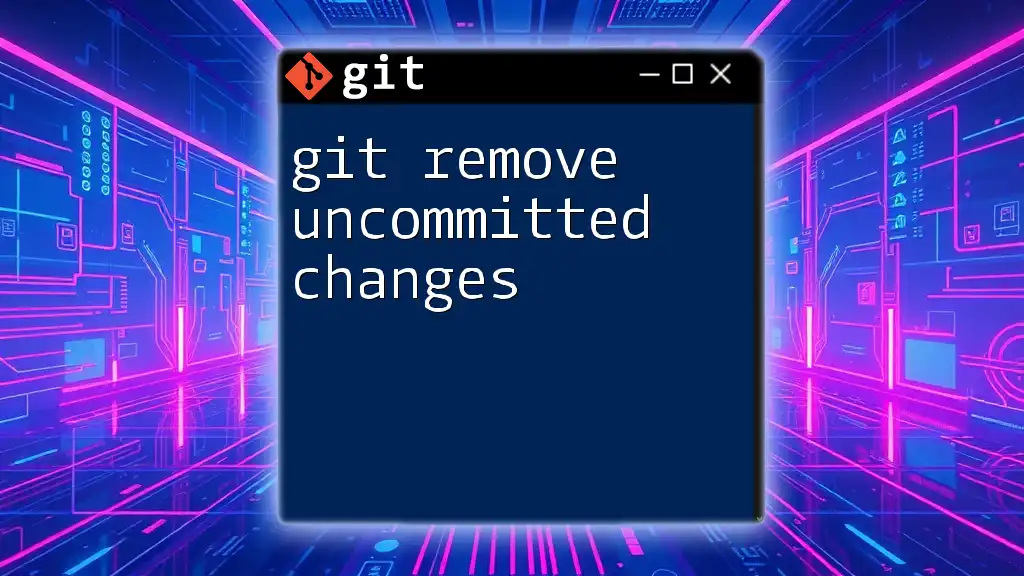To recover discarded changes in Git, you can use the `git reflog` command to find the commit reference and then reset your branch to that commit with `git reset --hard COMMIT_HASH`.
Here's a code snippet illustrating the commands:
git reflog
git reset --hard COMMIT_HASH
Understanding Git Discarded Changes
Definition of Discarded Changes
Discarded changes in Git refer to modifications that you could no longer access due to actions such as resetting your branch, checking out to a previous commit, or even losing uncommitted work. These changes are critically important to recover for maintaining the integrity and history of your projects.
Common Scenarios Leading to Discarded Changes
There are several situations where working in Git can lead to discarded changes:
- Accidental `git reset`: This command can wipe out your current commits if used incorrectly, leading to loss of important work.
- Unintentionally running `git checkout`: If you switch branches without committing or stashing your current changes, they might be lost.
- Premier alterations in working directory or staging area: Unsaved changes may vanish if not carefully managed before branch switches or resets.

Exploring Git Commands for Recovery
The Importance of the Git Reflog
What is the Git Reflog?
The Git reflog is a powerful tool that records updates to the tips of branches and allows you to track changes that are no longer referenced in the current state of your repository. It acts like a safety net for recent commits.
How to View the Reflog
To access the reflog, use the following command:
git reflog
This command lists all the actions performed in your repository, allowing you to see branches and HEAD positions over time. By reviewing this log, you’ll identify lost commits that you might want to revert back to.
Recovering from the Reflog
Step-by-Step Guide to Recovery
Identifying the Lost Commit
After running `git reflog`, you'll see an output similar to:
abc1234 HEAD@{0}: commit: Added new feature
def5678 HEAD@{1}: commit: Fixed bug in feature
ghi9012 HEAD@{2}: checkout: moving from branchA to branchB
In this example, if you lost your changes after the commit marked as `def5678`, take note of its hash.
Resetting to a Previous Commit
To restore your state to the desired commit, execute:
git reset --hard <commit-hash>
Replacing `<commit-hash>` with the relevant hash (e.g., `def5678`). While this command retrieves all changes made in that commit, be cautious: using `--hard` will delete all uncommitted changes—this is irreversible!
Using `git cherry-pick`
What is `git cherry-pick`?
`git cherry-pick` allows you to apply a commit from one branch onto another. This is useful when you want to selectively recover changes without resetting your entire branch history.
Example of Cherry-Picking a Commit
To recover a commit, run:
git cherry-pick <commit-hash>
Using the hash you noted from `git reflog`, this command seamlessly moves the changes from that commit into your current branch. If conflicts arise, Git will prompt you to resolve them before completing the cherry-pick.
If You Staged Your Changes
Understanding the Staging Area
The staging area, or index, is where you collect changes before committing them. If you made modifications and haven’t committed yet, loss can occur if you perform commands like `git reset`.
Recovering Uncommitted Changes
Using `git fsck`
If you discover uncommitted changes are lost, you can check for dangling blobs using:
git fsck --lost-found
This command reveals any "lost" commits and unreferenced files which can be re-added if you locate them.
Checking the Staging Area
To see what’s currently staged, use:
git diff --cached
This command displays the differences between the staged changes and the last commit. By confirming these changes, you can ensure you don’t overlook essential modifications.
Undoing Changes with `git revert`
What is `git revert`?
`git revert` is a command that allows you to undo changes from a specific commit without affecting the project’s history. This is particularly useful for safely recovering from unwanted changes in a collaborative environment.
Example of Reverting a Commit
To revert a commit, run:
git revert <commit-hash>
This operation creates a new commit that reverses the changes made in the specified commit. This means others can still see the original commit but the changes have been undone. In cases where conflicts occur, Git will indicate the issues and prompt for resolution, enabling you to manually address the conflicting changes.

Preventative Measures for Future Loss
Regular Commit Practices
Making frequent commits is crucial in version control. Breaking your changes into small commits with clear, descriptive messages not only helps you maintain a detailed history but also allows for easier recovery options.
Utilizing Feature Branches
Working in feature branches can significantly mitigate the risk of losing your commits. By isolating changes in branches derived from the main branch, you can work without fear of losing the primary branch’s history, making it easier to incorporate changes later.
Backup Strategies
Implementing backup strategies such as cloning your repository or using Git hosting services like GitHub or Bitbucket ensures your work isn't irretrievably lost. Regularly pushing changes to a remote repository provides an additional layer of security.

Conclusion
Understanding how to recover discarded changes in git is vital for managing your project's integrity effectively. Whether you utilize the reflog, employ cherry-picking, or revert commits, mastering these techniques will enhance your proficiency with Git. Always remember to adopt preventative practices to minimize potential loss, setting yourself up for continued success in version control.

Call to Action
To deepen your Git knowledge, consider subscribing for more valuable insights on Git commands and best practices. Explore our additional resources for more efficient ways to manage your code!

















